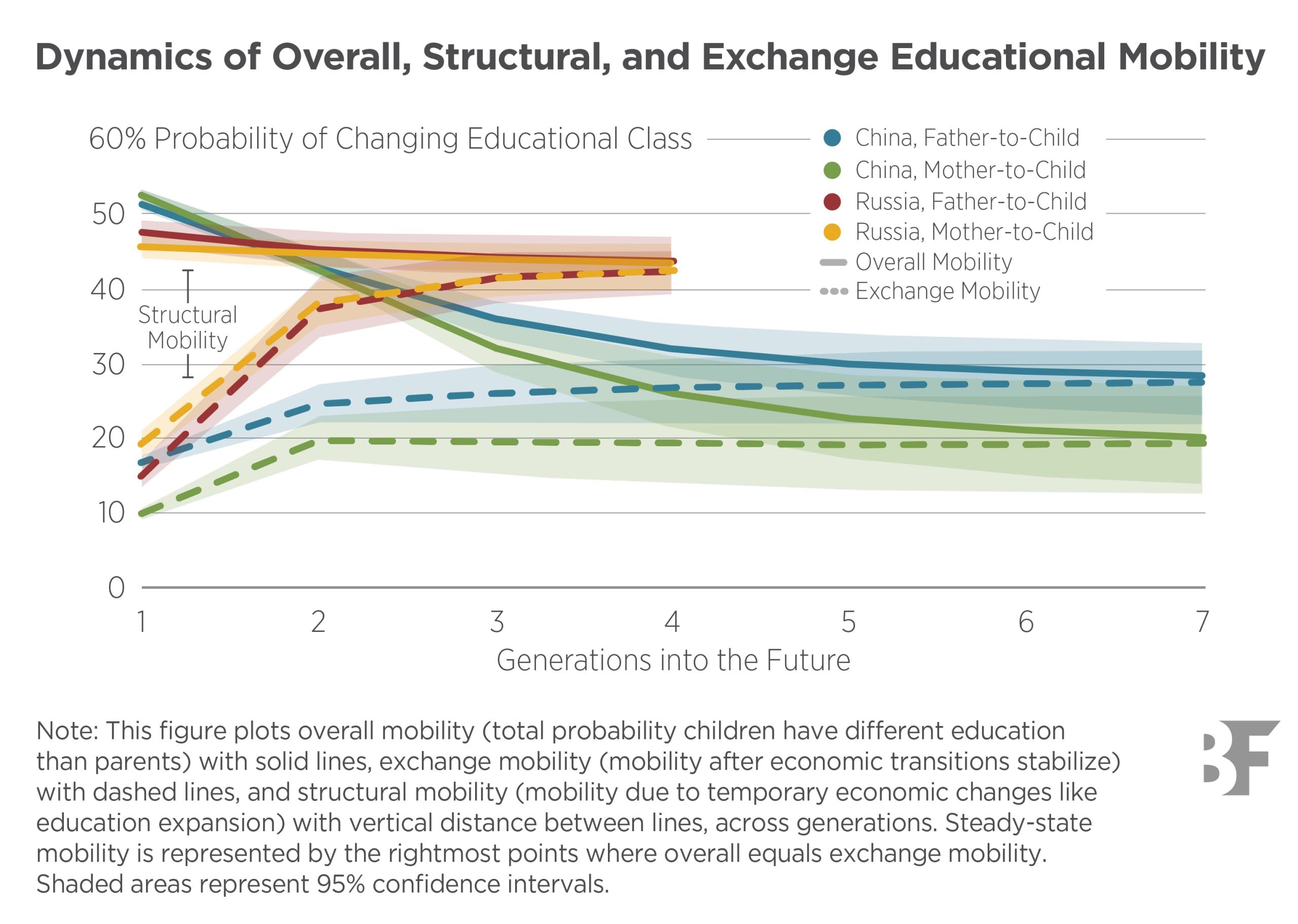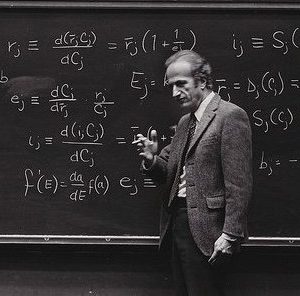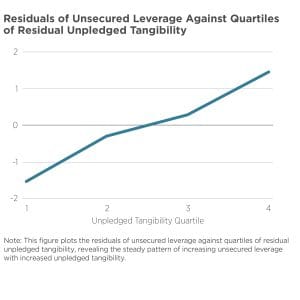The end of central planning and emergence of market economies in China and Russia represents one of the major economic transformations of the last century. While the economic effects of these transitions have been extensively studied, comparatively less attention has been paid to how they affected intergenerational mobility. In this paper, the authors add to this literature by studying intergenerational mobility—the ability of children to achieve different socioeconomic outcomes than their parents.

Specifically, the parents in this study were born roughly 1950-70 and grew up under central planning, while their children were born 1978-1997 during the market transitions. There are important distinctions between these transitions: the Russian transition (beginning 1991) involved regime collapse, while the Chinese transition (beginning 1978) was implemented by the same government. Second, Russia pursued shock therapy while China implemented gradual reforms. Finally, the countries started from different development stages—Russia was already industrialized and urban, while China was mostly poor and agrarian.
The authors use data from the China Family Panel Studies (8,788 child-parent pairs) and the Russian Longitudinal Monitoring Survey (3,718 child-parent pairs) to analyze how educational and occupational status transmits from parents to children. They develop new measures that distinguish between different types of mobility: structural mobility (driven by changes like educational expansion) and exchange mobility (reflecting genuine movement between social classes). The authors also measure “steady state mobility” to capture what mobility would look like once the transition period ends. They find the following:
- Both China and Russia exhibit very high levels of overall mobility during three decades of transition. For education, the probability of changing educational class for children is very high: 52-53% in China and 45-46% in Russia. These differences occur at different educational levels—mobility in China is driven by children who, unlike their parents, complete either high school or college, while Russian mobility is entirely due to increased college attendance.
- Similar results hold for occupational mobility, with overall rates closely aligned: 57-58% in China and 54-57% in Russia. However, the underlying sources differ significantly. Chinese occupational mobility is driven by movements out of agriculture, while Russian mobility is driven by shifts away from the manufacturing sector.
- These dramatic changes are largely due to structural rather than exchange mobility. Approximately 68-81% of individuals in China and 57-68% in Russia who transitioned out of their parental educational class did so because of the gap between parental and child educational distributions.
- For occupational mobility, the structural component accounts for 60% of class changes in China. In Russia, structural mobility is responsible for 50% of class shifts in father-to-child samples, but only 13% in mother-to-child samples—reflecting that women in the Soviet Union already held higher positions within the occupational structure.
- After accounting for structural changes, individuals in Russia have a higher probability of moving out of their parental educational class at steady state (42%) compared to China (19% for father-to-child and 27% for mother-to-child samples). In contrast, occupational steady-state mobility is similar in both countries, with 50-55% probability of exiting the parental occupational class.
- Comparing these results to the US, we find that steady state mobility in education is substantially higher in the US and Russia compared to China, but occupational steady state mobility is comparable in all three countries.. This suggests that China’s impressive current educational mobility may be temporary, declining as structural transitions complete.
These results demonstrate the importance of distinguishing between temporary structural changes and permanent mobility patterns when evaluating social mobility in transitioning economies.












